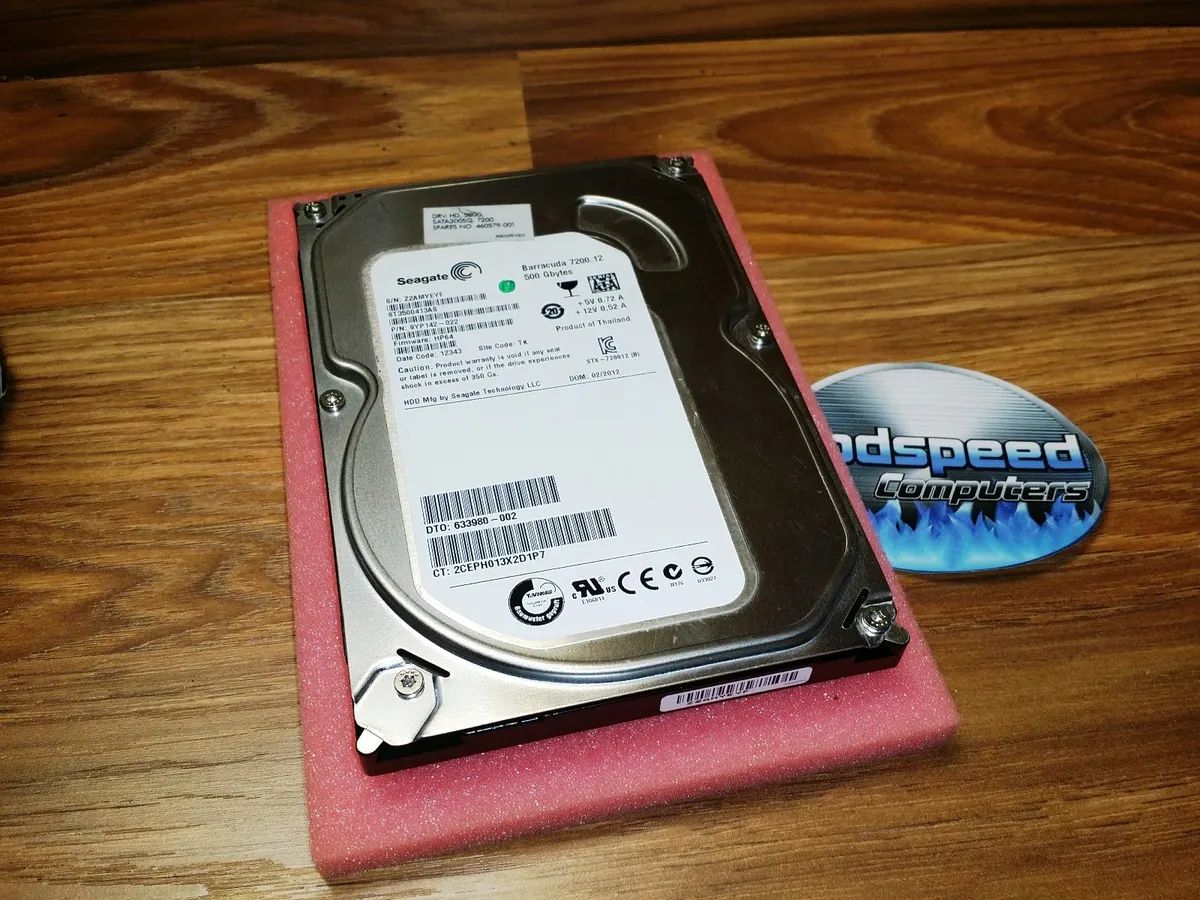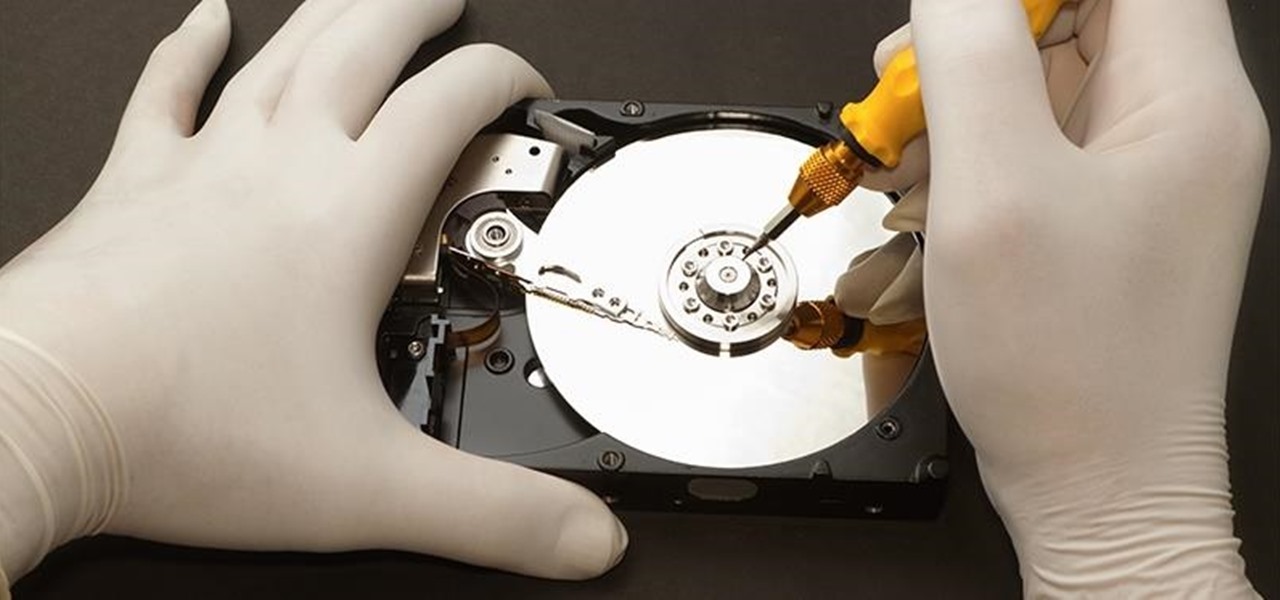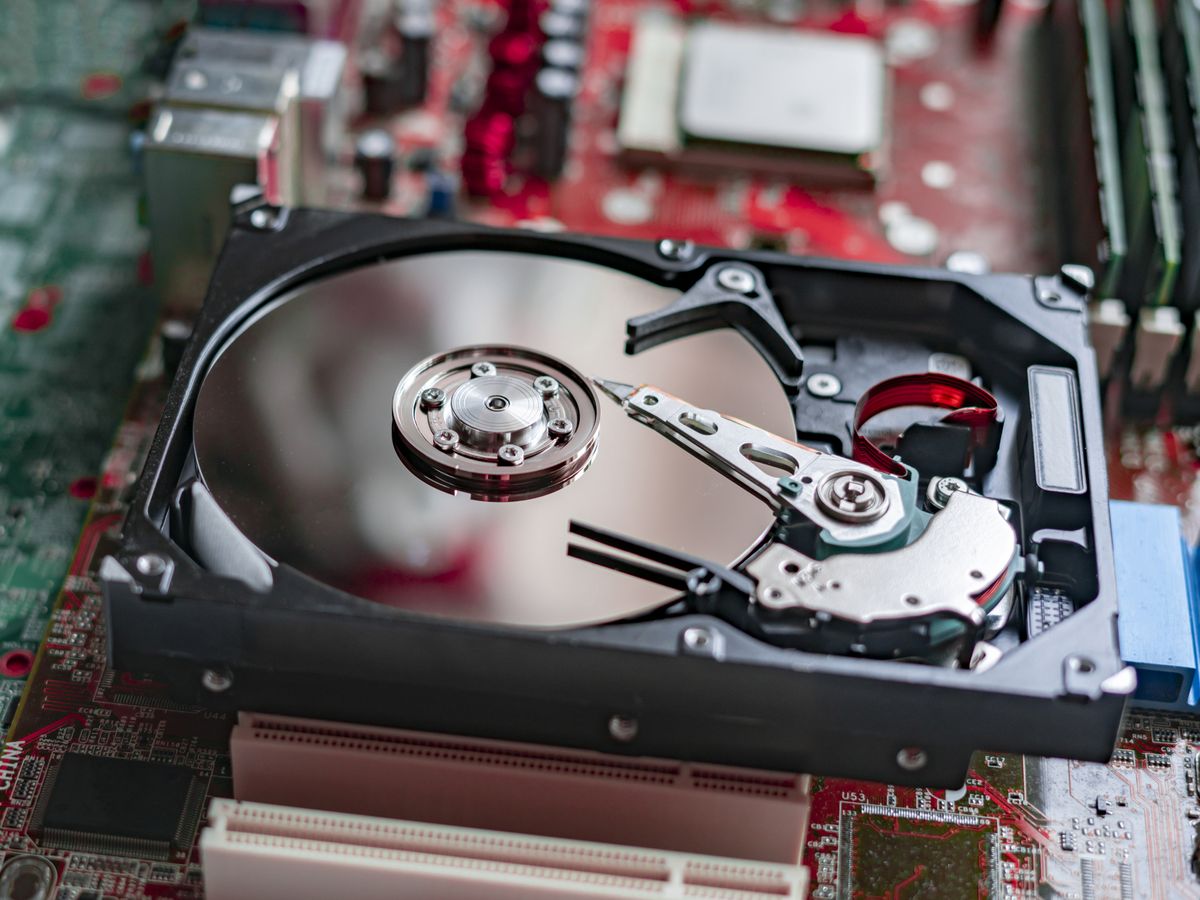Introduction
A hard disk drive (HDD) is a vital component of a computer system, responsible for storing and retrieving digital data. As technology continues to advance, the amount of data stored on HDDs has skyrocketed, making them a treasure trove of information. Whether it’s personal files, corporate documents, or evidence in a criminal investigation, the data contained within a hard disk drive holds immense value.
Obtaining an image of a hard disk drive is the process of creating a bit-by-bit copy of the entire contents stored on the device. This image serves as a snapshot of the drive’s data at a specific point in time. While the practice is commonly associated with forensic investigations, it has numerous applications in various sectors.
In this article, we will explore the ultimate goal of obtaining an image of a hard disk drive. We will delve into the reasons why individuals and organizations go to great lengths to acquire this digital blueprint, highlighting its significance in data preservation, data recovery, forensic investigations, chain of custody maintenance, legal compliance, and cybersecurity.
So, whether you’re a curious reader, a tech enthusiast, or a professional in the field, join us as we uncover the importance and implications of obtaining an image of a hard disk drive.
Understanding the Hard Disk Drive
Before we delve into the importance of obtaining an image of a hard disk drive, it’s crucial to first understand how these devices work. A hard disk drive (HDD) is a non-volatile storage device that uses magnetic storage to store and retrieve digital data. It consists of one or more circular platters coated with a magnetic material, which are mounted on a spindle and spin at high speeds.
Data is written and read from the platters using a read/write head, which floats above the surface without actually touching it, thanks to a thin cushion of air created by the spinning motion. The read/write head is controlled by an actuator arm, allowing it to move across the platters to access different areas of data.
Hard disk drives store data in binary format, where information is represented as a series of ones and zeros. The data is organized into concentric circles known as tracks, and each track is divided into smaller sectors, typically 512 bytes in size. These sectors are the smallest unit of data that can be read from or written to the hard disk drive.
As technology progresses, hard disk drives have evolved to offer larger storage capacities, faster read and write speeds, and improved reliability. Today, you can find HDDs with terabytes of storage space, making them an essential component in both personal computers and enterprise-grade storage systems.
Understanding the inner workings of a hard disk drive lays the foundation for grasping the importance of obtaining an image of its contents. In the next sections, we will explore the different scenarios where acquiring a detailed replica of the HDD becomes crucial.
Importance of Obtaining an Image of a Hard Disk Drive
Obtaining an image of a hard disk drive is a critical step in various scenarios where the preservation, recovery, and analysis of digital data are necessary. Let’s explore some of the key reasons why acquiring an image of a hard disk drive is of utmost importance:
1. Ensuring Data Preservation:
By creating an image of a hard disk drive, individuals and organizations can safeguard the data stored on the device. This becomes particularly crucial in situations where the original drive may be damaged, corrupted, or at risk of further data loss. The image acts as a backup, preserving the data in its original state and reducing the risk of permanent data loss.
2. Recovering Lost or Deleted Data:
In the unfortunate event of data loss due to accidental deletion, hardware failure, or malware attacks, having an image of the hard disk drive can be a lifesaver. Forensic tools can be used to analyze the image and recover lost or deleted files, providing a chance to retrieve valuable information that would otherwise be lost.
3. Conducting Forensic Investigations:
In legal and forensic investigations, obtaining an image of a hard disk drive is paramount for evidence collection and analysis. The image provides a complete and unaltered replica of the drive’s data at the time of acquisition, ensuring the integrity and admissibility of evidence in a court of law. Investigators can meticulously examine the image, uncovering valuable information and clues pertaining to a case.
4. Maintaining Chain of Custody:
The chain of custody refers to the chronological documentation of the movement and handling of evidence. When obtaining an image of a hard disk drive, strict procedures are followed to maintain an unbroken chain of custody. This ensures that the image remains untampered with and admissible as evidence, strengthening its credibility.
5. Ensuring Legal Compliance:
In certain industries and legal jurisdictions, organizations are required to preserve and provide access to specific data, especially in the face of litigation or compliance audits. By obtaining an image of a hard disk drive, organizations can demonstrate their compliance with relevant laws and regulations, avoiding legal repercussions.
6. Enhancing Cybersecurity Measures:
Studying the image of a hard disk drive can provide valuable insights into cyber threats and vulnerabilities. By analyzing the digital footprint left on the drive, security professionals can identify and address security weaknesses, ensuring stronger protection against future attacks.
Obtaining an image of a hard disk drive is a fundamental step in preserving data, recovering lost information, conducting forensic investigations, maintaining chain of custody, ensuring legal compliance, and enhancing cybersecurity measures. It empowers individuals and organizations to effectively manage digital assets and navigate the complexities of the digital world.
Ensuring Data Preservation
One of the primary reasons for obtaining an image of a hard disk drive is to ensure the preservation of data. In today’s digital age, data is a valuable asset for individuals and organizations alike. Whether it’s personal photos, corporate documents, financial records, or sensitive information, the loss or corruption of data can have severe consequences.
The Importance of Backup:
Creating an image of a hard disk drive serves as a backup mechanism, providing a secure and complete copy of the data stored on the device. This is particularly crucial in situations where the original drive may be prone to physical damage, hardware failure, or malware attacks. By having an image, individuals and organizations can safeguard their data, minimizing the risk of permanent loss.
Preserving Data Integrity:
An image of a hard disk drive ensures that the data remains intact and unmodified. It captures the exact replica of the drive’s contents at a specific point in time, preserving the integrity of the data. This is particularly important in legal and regulatory contexts where the admissibility and authenticity of data are critical, such as in e-discovery or compliance audits.
Data Recovery and Restoration:
In the event of accidental deletion, system crashes, or disk failures, having an image of the hard disk drive can be invaluable for data recovery and restoration. Forensic tools can be used to analyze the image and efficiently retrieve lost or deleted files, allowing individuals and organizations to recover essential information that would otherwise be irretrievable.
Protecting Against Data Corruption:
Data corruption can occur due to various factors, including power outages, hardware malfunctions, or software errors. By obtaining an image of the hard disk drive, individuals and organizations can create a snapshot of the data before any corruption occurs. This enables them to revert back to a known good state and minimize the impact of data corruption on their operations.
Preservation in Forensic Investigations:
In forensic investigations, obtaining an image of a hard disk drive is of paramount importance. It ensures the preservation of evidence in its original form, maintaining its integrity and admissibility in a court of law. By capturing the exact state of the drive at the time of acquisition, forensic experts can thoroughly analyze the image while maintaining the chain of custody, ensuring the credibility of the evidence.
Obtaining an image of a hard disk drive plays a significant role in ensuring data preservation. From safeguarding data against loss and corruption to facilitating data recovery and preserving evidence in forensic investigations, the creation of an image is an essential step in mitigating the risks associated with data loss and ensuring the long-term preservation of valuable information.
Recovering Lost or Deleted Data
Accidental deletion, system failures, and data corruption can result in the loss of important files and data. Fortunately, obtaining an image of a hard disk drive can be a crucial step in recovering lost or deleted data. Let’s explore why this process is invaluable for data recovery:
Preserving the Original State:
When a file is deleted or lost, it is not immediately removed from the hard disk drive. Instead, the reference to the file is removed from the file system, making it inaccessible to the operating system. By obtaining an image of the hard disk drive, experts can analyze the image without altering the original data and search for traces of deleted or lost files.
Recovery Tools and Techniques:
With the image of the hard disk drive, specialized data recovery tools and techniques can be employed to extract deleted or lost data. These tools can scan the image, recover files that are no longer present in the file system, and reconstruct fragmented files. By utilizing advanced algorithms, experts can often retrieve a significant amount of data that would otherwise be deemed unrecoverable.
Metadata and File Carving:
Metadata, which includes information about files’ attributes and characteristics, can play a vital role in recovering lost or deleted data. Experts can examine the image of the hard disk drive to extract metadata associated with the deleted files, such as creation dates, file sizes, and file types. Additionally, utilizing file carving techniques, experts can identify file signatures and reconstruct files based on their raw data.
Deleted Partition Recovery:
In cases where an entire partition is accidentally or deliberately deleted, obtaining an image of the hard disk drive provides an opportunity for partition recovery. Specialized tools can analyze the image and reconstruct the deleted partition, allowing for the recovery of all files and data stored within it.
Forensic Investigations:
In forensic investigations, recovering deleted or lost data is often crucial to uncovering evidence and solving cases. By obtaining an image of the hard disk drive and applying advanced forensic techniques, experts can retrieve vital information that may have been intentionally or unintentionally deleted. This can provide valuable insights into the actions and behavior of individuals involved in the investigation.
Obtaining an image of a hard disk drive is a valuable step in recovering lost or deleted data. It provides experts with the necessary resources and tools to sift through the image and retrieve valuable information that would otherwise be lost. By utilizing data recovery techniques and forensic analysis, the image acts as a gateway to recovering crucial data that can have significant implications in various domains.
Conducting Forensic Investigations
In forensic investigations, the acquisition of an image of a hard disk drive is essential for collecting and analyzing digital evidence. The image serves as a comprehensive snapshot of the drive’s contents at a specific point in time and plays a crucial role in the investigation process. Let’s explore the significance of obtaining a hard disk drive image in forensic investigations:
Preservation of Evidence:
When conducting a forensic investigation, the preservation of evidence is of utmost importance. Obtaining an image of a hard disk drive ensures that the original data remains intact and unaltered. This allows forensic experts to refer back to the image whenever necessary and analyze the data without the risk of unintentional modification or corruption.
Data Analysis and Reconstruction:
The image of a hard disk drive provides forensic investigators with a controlled environment for data analysis and reconstruction. Forensic tools can be employed to examine the image, uncover hidden or deleted files, and reconstruct fragmented data. This enables investigators to piece together the digital puzzle, gather evidence, and build a comprehensive case.
Timeline and Activity Reconstruction:
By analyzing the image of a hard disk drive, forensic experts can recreate the timeline of events and reconstruct activities. Log files, metadata, and timestamps can be extracted from the image, allowing investigators to establish a sequence of actions, identify patterns, and determine the sequence of events leading to a particular incident.
Password and Encryption Analysis:
In forensic investigations, password-protected files and encrypted data may pose challenges. However, by obtaining an image of a hard disk drive, forensic analysts can identify and analyze encrypted files, attempt password cracking techniques, and employ cryptographic analysis to access and decrypt relevant information.
Internet and Network Analysis:
The image of a hard disk drive can be crucial in investigating online activity and network connections. Through analysis of web browser histories, cache files, and network logs contained within the image, forensic experts can uncover internet browsing patterns, communication records, and potential network intrusions or unauthorized access.
Evidence Preservation and Chain of Custody:
When obtaining an image of a hard disk drive in a forensic investigation, strict protocols are followed to maintain the chain of custody. This ensures that the image remains credible and admissible in court. Proper documentation and secure storage of the image throughout the investigation process help preserve the integrity and authenticity of the evidence.
Obtaining an image of a hard disk drive is a critical step in conducting forensic investigations. The image serves as a crucial resource for preserving evidence, analyzing and reconstructing data, establishing timelines, analyzing passwords and encryption, investigating internet and network activity, and maintaining the chain of custody. It empowers forensic experts to uncover crucial information and provide valuable insight in various legal, criminal, and cybersecurity investigations.
Maintaining Chain of Custody
When it comes to handling and presenting evidence, maintaining a solid chain of custody is critical. In forensic investigations, obtaining an image of a hard disk drive plays a vital role in preserving the integrity and credibility of evidence throughout the entire legal process. Let’s explore why maintaining chain of custody is essential when acquiring a hard disk drive image:
Preserving Evidence Integrity:
The chain of custody ensures that the evidence, in this case, the hard disk drive image, remains secure and unaltered from the moment of acquisition. By maintaining a meticulous record of every individual who handled the evidence, the chain of custody guarantees that the image has not been tampered with or compromised during the investigation. This is crucial for upholding the integrity of the evidence in a courtroom setting.
Admissibility in Court:
Properly maintained chain of custody documentation is essential for establishing the authenticity and reliability of the evidence. When obtaining an image of a hard disk drive, meticulous records of all custody transfers, including the names, dates, and times of each transfer, are documented. This ensures that the evidence can be admitted in court and withstand any challenges to its authenticity.
Documentation of Acquisition Details:
The chain of custody also documents the specific details of the acquisition process. This includes information such as the date and time of the acquisition, the device and software used, any unique identifiers associated with the acquired image, and the individuals involved in the acquisition process. These details strengthen the credibility of the image, leaving no room for doubt about its origin and integrity.
Tracking and Accountability:
By maintaining a clear chain of custody, it becomes possible to track the location and movement of the evidence at all times. This level of accountability ensures that the evidence remains under strict control and minimizes the potential for theft, tampering, or unauthorized access. It also provides transparency during the investigation, promoting a higher level of trust in the integrity of the process.
Establishing Evidence Continuity:
The chain of custody establishes a clear continuity of the evidence, from the moment of acquisition through its analysis and presentation in court. This ensures that there are no gaps or uncertainties in the evidence’s handling and storage, making it more likely to be seen as reliable and persuasive in a legal setting.
Protecting Against Defense Challenges:
During legal proceedings, defense attorneys may challenge the integrity or chain of custody of the evidence. By maintaining a comprehensive and well-documented chain of custody, prosecutors can confidently demonstrate the reliability and validity of the evidence, countering any attempts to undermine its credibility.
Maintaining an unbroken chain of custody is crucial when obtaining an image of a hard disk drive in forensic investigations. It ensures the integrity and admissibility of the evidence, establishes a clear record of custody transfers, documents acquisition details, tracks the evidence’s movement, establishes evidence continuity, and protects against defense challenges. As a result, the chain of custody plays a pivotal role in upholding the credibility and reliability of the hard disk drive image throughout the legal process.
Ensuring Legal Compliance
In today’s complex legal landscape, organizations and individuals are required to adhere to various laws and regulations related to data preservation, privacy, and security. When obtaining an image of a hard disk drive, ensuring legal compliance is crucial to avoid potential legal consequences. Let’s explore why compliance is essential in the process of acquiring a hard disk drive image:
Preservation of Evidentiary Data:
Organizations may be required by law to preserve and provide access to specific data, especially in the context of litigation, regulatory investigations, or compliance audits. When obtaining an image of a hard disk drive, organizations can demonstrate their compliance by preserving the data in its original state and ensuring its availability as required by law.
Evidence Admissibility:
Ensuring legal compliance in the acquisition of a hard disk drive image is essential to guarantee the admissibility of the evidence in legal proceedings. By following legal protocols and best practices, organizations and individuals can establish the credibility and reliability of the image, making it more likely to be accepted by the court as legitimate evidence.
Data Privacy and Protection:
Legal compliance also extends to data privacy and protection. When acquiring a hard disk drive image, organizations must ensure that they are not infringing upon the privacy rights of individuals or breaching any data protection regulations. This involves obtaining proper consent, adhering to data protection laws, and utilizing secure and authorized methods of image acquisition and storage.
Chain of Custody Documentation:
Compliance with legal requirements includes maintaining a comprehensive chain of custody documentation throughout the acquisition process. Properly documented custody transfers, including the names, dates, and times of each transfer, demonstrate compliance with legal standards and establish the authenticity and integrity of the evidence.
Defensible Processes:
By ensuring legal compliance in the acquisition of a hard disk drive image, organizations and individuals can establish defensible processes in case of legal challenges. Compliance with applicable laws and regulations provides a strong foundation for defending the acquisition methods, data handling procedures, and evidence integrity, minimizing the potential for legal setbacks or disputes.
Mitigating Legal Risks:
Failure to comply with legal requirements when obtaining a hard disk drive image can result in significant legal consequences, including the exclusion of evidence, monetary fines, reputational damage, and potential legal liability. By ensuring legal compliance, organizations and individuals can mitigate these risks and ensure that their actions are in line with legal obligations.
Ensuring compliance with relevant laws and regulations is paramount when obtaining an image of a hard disk drive. Compliance encompasses data preservation, evidence admissibility, data privacy and protection, chain of custody documentation, defensible processes, and risk mitigation. By following legal requirements and guidelines, organizations and individuals can navigate the acquisition process with confidence, minimizing legal risks and promoting a culture of legal compliance.
Enhancing Cybersecurity Measures
In today’s digital landscape, where cyber threats are prevalent, enhancing cybersecurity measures is of utmost importance for individuals and organizations alike. Acquiring an image of a hard disk drive can significantly contribute to bolstering cybersecurity defenses. Let’s explore why the process of obtaining a hard disk drive image plays a crucial role in enhancing cybersecurity measures:
Identifying Vulnerabilities:
By analyzing the image of a hard disk drive, cybersecurity professionals can identify vulnerabilities in the system. Examination of the image allows for the detection of malware, suspicious files, unauthorized software, or other indicators of possible security breaches. This aids in proactively addressing vulnerabilities and implementing necessary safeguards to strengthen the overall security posture.
Investigating Security Incidents:
Obtaining an image of a compromised hard disk drive is vital for conducting investigations into security incidents. It enables cybersecurity teams to conduct in-depth analysis to determine the cause and impact of the incident, identify the extent of the breach, and trace the attacker’s activities. This information is invaluable for implementing targeted remediation measures and preventing future incidents.
Detecting Insider Threats:
Insider threats pose a significant risk to organizations and their sensitive data. Obtaining an image of an employee’s hard disk drive, in compliance with legal and privacy requirements, can provide insights into their activities, behaviors, and data access patterns. This can aid in detecting potential insider threats and taking appropriate measures to mitigate the risks associated with malicious or unintentional actions by employees.
Forensic Analysis:
The forensic analysis of a hard disk drive image can provide valuable information for identifying the source and nature of cyberattacks. By examining the image, cybersecurity experts can trace the attack vectors, uncover the tools and techniques used by attackers, and gather evidence that can be used in legal or regulatory actions against the perpetrators.
Incident Response and Recovery:
Obtaining an image of a compromised hard disk drive is vital for effective incident response and recovery. It allows organizations to understand the extent of the breach, the impacted systems and data, and the potential propagation of the attack. This information is crucial for formulating a comprehensive response plan, isolating affected systems, restoring data from the image, and implementing measures to prevent similar incidents in the future.
Security Awareness and Training:
The process of obtaining a hard disk drive image serves as a valuable opportunity to educate individuals and organizations about the importance of cybersecurity. It highlights the potential risks and vulnerabilities that exist within a computer system, emphasizing the need for robust security practices and continuous awareness and training initiatives.
Obtaining an image of a hard disk drive plays a significant role in enhancing cybersecurity measures. It facilitates the identification of vulnerabilities, aids in investigating security incidents, detects insider threats, enables forensic analysis, supports incident response and recovery efforts, and promotes security awareness and training. By leveraging the insights gained from analyzing hard disk drive images, organizations can proactively strengthen their cybersecurity defenses and better protect their valuable data and systems.
Conclusion
The acquisition of an image of a hard disk drive holds great significance in various scenarios, ranging from data preservation and recovery to forensic investigations and cybersecurity enhancement. By creating a bit-by-bit copy of the entire contents of a hard disk drive, individuals and organizations can ensure the preservation of valuable data, recover lost or deleted information, conduct in-depth forensic investigations, maintain a solid chain of custody, comply with legal requirements, and bolster cybersecurity measures.
Understanding the inner workings of a hard disk drive provides a foundation for grasping the importance of obtaining an image. By capturing a comprehensive snapshot of the drive’s data, organizations can protect against the risk of permanent data loss and corruption, ensuring data preservation and integrity. Whether it’s personal files, corporate data, or evidence in a legal case, the creation of an image serves as a backup that safeguards against unexpected incidents and facilitates data recovery.
Obtaining an image of a hard disk drive is particularly crucial in forensic investigations, where evidence preservation, integrity, and admissibility are paramount. The image serves as a reliable reference point, allowing forensic experts to analyze the data without compromising its integrity. It aids in reconstructing timelines, identifying patterns, and uncovering crucial information that can be presented in legal proceedings.
Maintaining a clear chain of custody documentation throughout the acquisition process is of utmost importance, establishing the authenticity and reliability of the hard disk drive image. Compliance with legal requirements ensures that the evidence remains secure and admissible in court, mitigating potential legal risks and challenges.
Furthermore, obtaining a hard disk drive image contributes to enhancing cybersecurity measures. By analyzing the image, vulnerabilities can be identified, insider threats detected, and incident response and recovery efforts strengthened. It enables organizations to take proactive steps in fortifying their defenses and protecting against cyber threats.
In conclusion, the process of obtaining an image of a hard disk drive serves as a valuable tool in data preservation, recovery, forensic investigations, legal compliance, and cybersecurity enhancement. It empowers individuals and organizations to effectively manage their digital assets, navigate legal complexities, and safeguard against potential risks. By leveraging the insights gained from hard disk drive images, organizations can make informed decisions, strengthen their security posture, and ensure the integrity and availability of their valuable data.

























